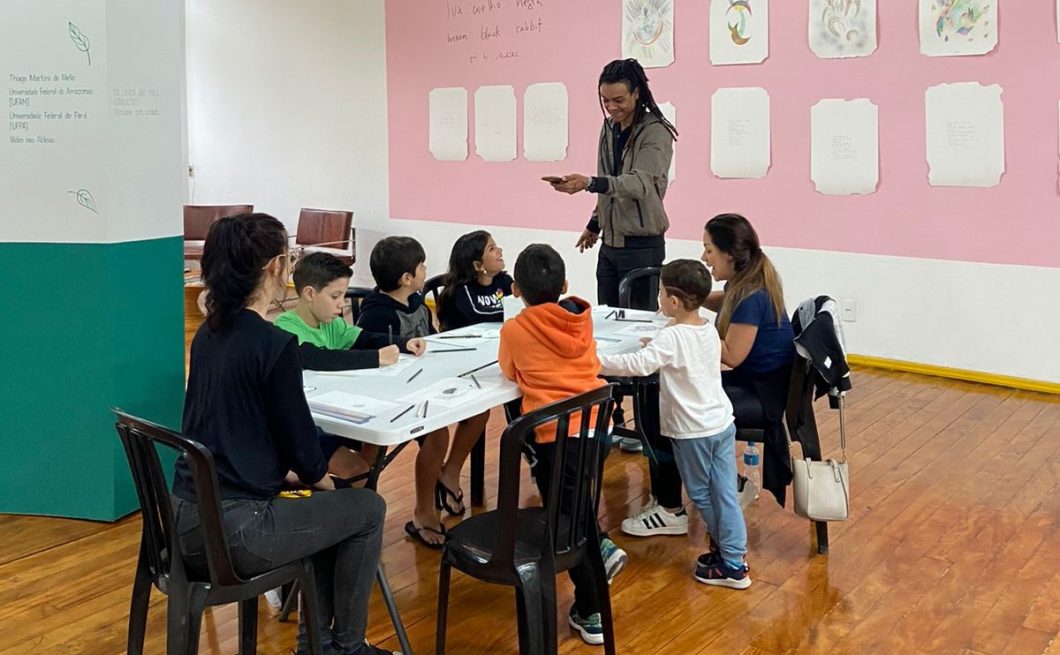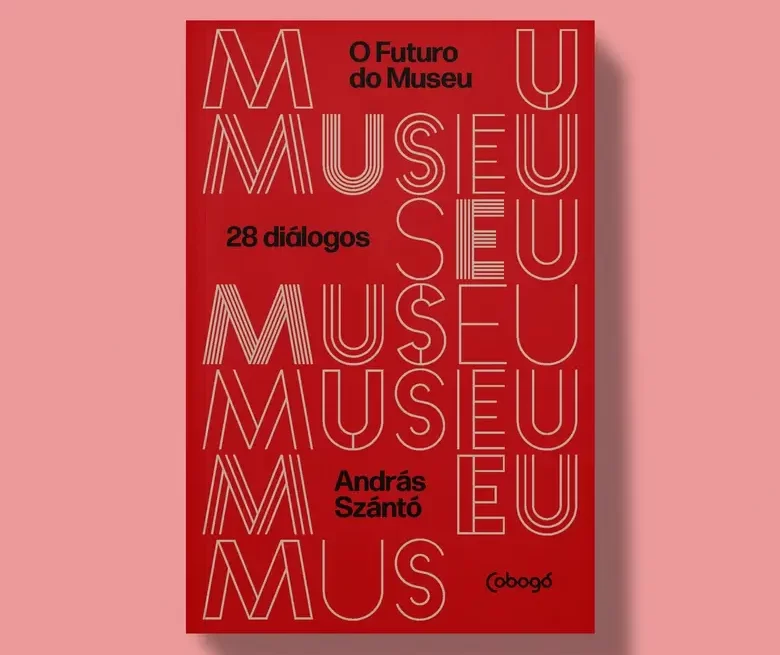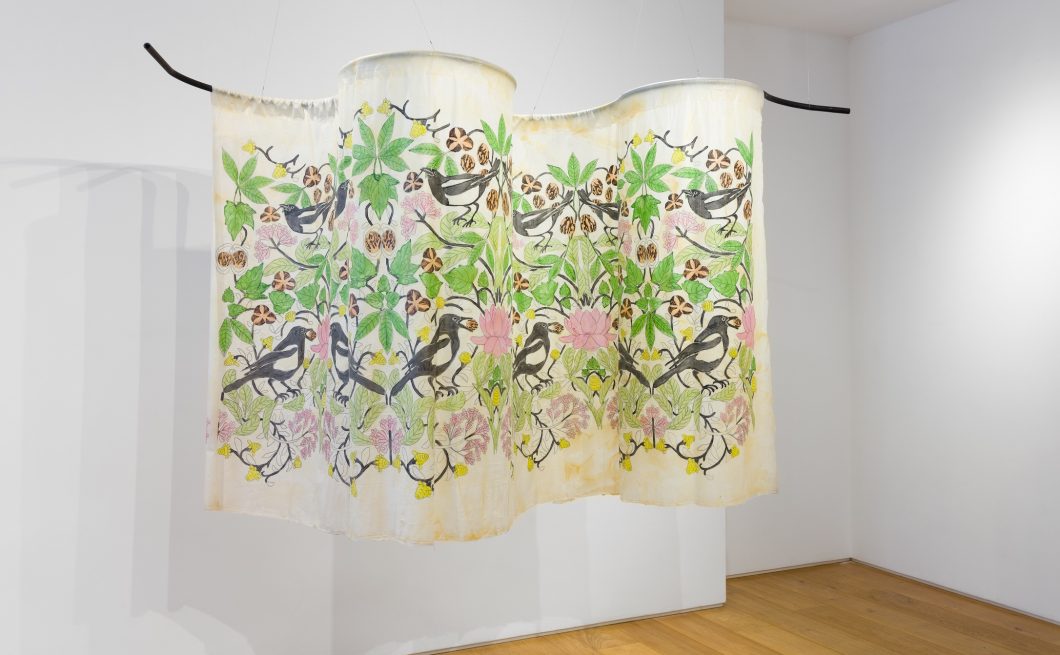Interview: meet Hal Wildson, the new resident at Instituto Inclusartiz
The artist was selected for the Residency and Research Program through an unprecedented partnership between the institute and Arte Pará’s 40th edition
Hal Wildson, from Goiás, arrived in Rio de Janeiro on January 16 to spend a month in artist residency at Instituto Inclusartiz’s headquarters. The artist was selected for the program through an unprecedented partnership between the institute and Arte Pará, which offered a grant to one of the participants of the 40th edition of its traditional art show to join the Inclusartiz Artist Residency and Research Program.
Multimedia artist and poet with native background, Wildson was born in 1991 in Vale do Araguaia, on the border region between Goiás and Mato Grosso, a crucial place to understand the origin and motivations of his work. His research emerges from experiences in the Midwest hinterland, dialoguing with sociopolitical issues that sustain Brazil. Deploying the concept of memory-oblivion, identity and the “writing-rewriting” of history, the artist, who currently lives and works in São Paulo, appropriates materials and documentation processes that have been used in recent decades to officially record the country’s history, such as typing, identity cards and stamps.
“I was born in a place in Brazil which was away from art, the elitist culture and the Brazilian ‘art axis.’ My production naturally derived from my experience in the hinterland, my struggles and pains; making art was the way I found to survive. Today, I keep a close eye on the history of Brazil, using these memories as a mechanism for activating and creating new narratives to combat inequality and Brazilian injustices,” he says.
Read the full interview below.

Hal Wildson will spend a month at the headquarters of Instituto Inclusartiz, in Rio de Janeiro, to develop his research / Photo: Thales Leite
Hal, you have a Bachelor of Arts/Literature degree. When and how did your interest in visual arts arise?
I have always been interested in arts; since childhood, I liked drawing, acting, making music. Although there were not many artistic references other than what I saw on TV, art was always a strong yearning for me. I studied literature because in my homeland there was no arts course; the interest in writing, poetry and literature led me to enter the course. During this period of public university, the contact with artist friends led me to want to express myself more and more through the arts. Together we did exhibitions, performances, presentations. After that, I dedicated myself more and more to the arts in general.
Writing and documentation play a prominent role in your research. Do you think that your training interferes with your artistic production? How do you relate these two fields in your work?
I think so. My way of making and thinking about art has always been interdisciplinary, so uniting different fields of thought seems very interesting and enriching to me. I believe that writing and words are fundamental in my work and relate to each other in search of potential. In many moments, writing strengthens visual artistic production, and the opposite as well. The word is the essential fuel of my production.
Your work investigates memory, often taking personal memories and files as a starting point, such as photos and stories from your childhood. What is the impact of your life experiences on your work? Talk a little about your process.
My origin and my history are fundamental in my way of living and seeing the world, and the way I see things directly influences my artistic production. I was born in a place in Brazil distant from art, the elitist culture and the Brazilian art axis, my production naturally started from my experience in the sertão [the hinterland], my struggles and pains – making art was the way I found to survive. Today, I keep a close eye on the history of Brazil, using these memories as a mechanism for activating and creating new narratives to combat Brazilian inequality and injustices. When I talk about my childhood, I am also talking about this forgotten Brazil. When I produce about Brazil, it is in an attempt to confront these oblivion projects and to use memory as a support for the future.

The artist’s work investigates memory, often having memories and personal archives as a starting point / Photo: publicity
The promotion of Brazilian contemporary art is still very concentrated in the Rio-São Paulo axis. As an artist from the Midwest, how do you evaluate this dynamic? What obstacles do artists coming from other Brazilian regions must face in order to establish themselves in the circuit?
I was born and raised in the Midwest, my contact with art was limited to what I could see on television and the little I learned in classrooms. You grow up thinking that art only exists in the capitals of São Paulo and Rio de Janeiro. The so-called “good art” is in museums, artistic narratives inhabit this place of status and power and were usually far from the hinterland. The lack of reference, the lack of structure and good schools, limited access to knowledge, all of that hinders the trajectory of an artist born in those circumstances. To enter this axis, it is necessary to break down many barriers of a system that was not made for people like me. I believe it is very important to make room for those forgotten narratives. It is necessary to give voice and believe in the art that is born in the heart of our territory.
What is the significance of initiatives such as those promoted by the Inclusartiz Artist Residency and Research Program, which aim at the inclusion and promotion at national and international levels of artists outside the Southeastern axis?
In a historic moment like the one we are experiencing, to expand the narratives within the art market in Brazil becomes even more important, emphasizing the importance of dialogue, culture and inclusion in this period of new beginnings in our country. Instituto Inclusartiz is a very present force within this change, I believe that through initiatives like this we strengthen Brazilian art so that these powers become tools for social transformation. I think of art, education, research as concrete ways of building a fairer country.
You were selected for the Artist Residency and Research Program at Instituto Inclusartiz based on your participation in Arte Pará 2022. How was it for you to receive this news? Tell us a little about the works that were on display there.
It was a very important achievement in my career to have this recognition, to see my work gaining visibility and my research being taken seriously by respected curators such as Paulo Herkenhoff. For me, this is already a great achievement. I participated in Arte Pará with three works that are part of my current research on official symbols and memory-oblivion projects. These works have a great historical research of Brazil and a very strong political discourse, such as the flag “Monument to Independence III,” for example, which confronts these power projects of the extreme right linked to the “Bible, cattle and bullet” caucus in Congress, and that bring to surface this colonial and authoritarian Brazil.

Flag “Monument to Independence III”, one of the works by Hal Wildson that were part of Arte Pará 2022 / Photo: publicity
What are your expectations for this period of residency here at Inclusartiz? What works/research do you intend to develop or continue?
I am very excited about this opportunity and intend to work a lot, to visit museums, collections, archives, talk to curators and be attentive to all these knowledge exchanges. This moment of research and dialogue is fundamental in my production. I am currently developing a work on Brazilian coats of arms/heraldry and the legacy left by the extreme right in Brazil. Being able to develop this research in Rio de Janeiro is very enriching, since this city has a direct connection with the history of the Republic in Brazil.
What are your plans for after your residency in Rio de Janeiro? Do you already have new projects in mind?
This year, there are already some exhibitions that I will participate in, and I also intend to work a lot on these series that are emerging at this time of residency. I believe it will be a year of hard work and many encounters in art. It is a moment of resumption of culture in Brazil, a moment of serious work and of looking forward with hope.





